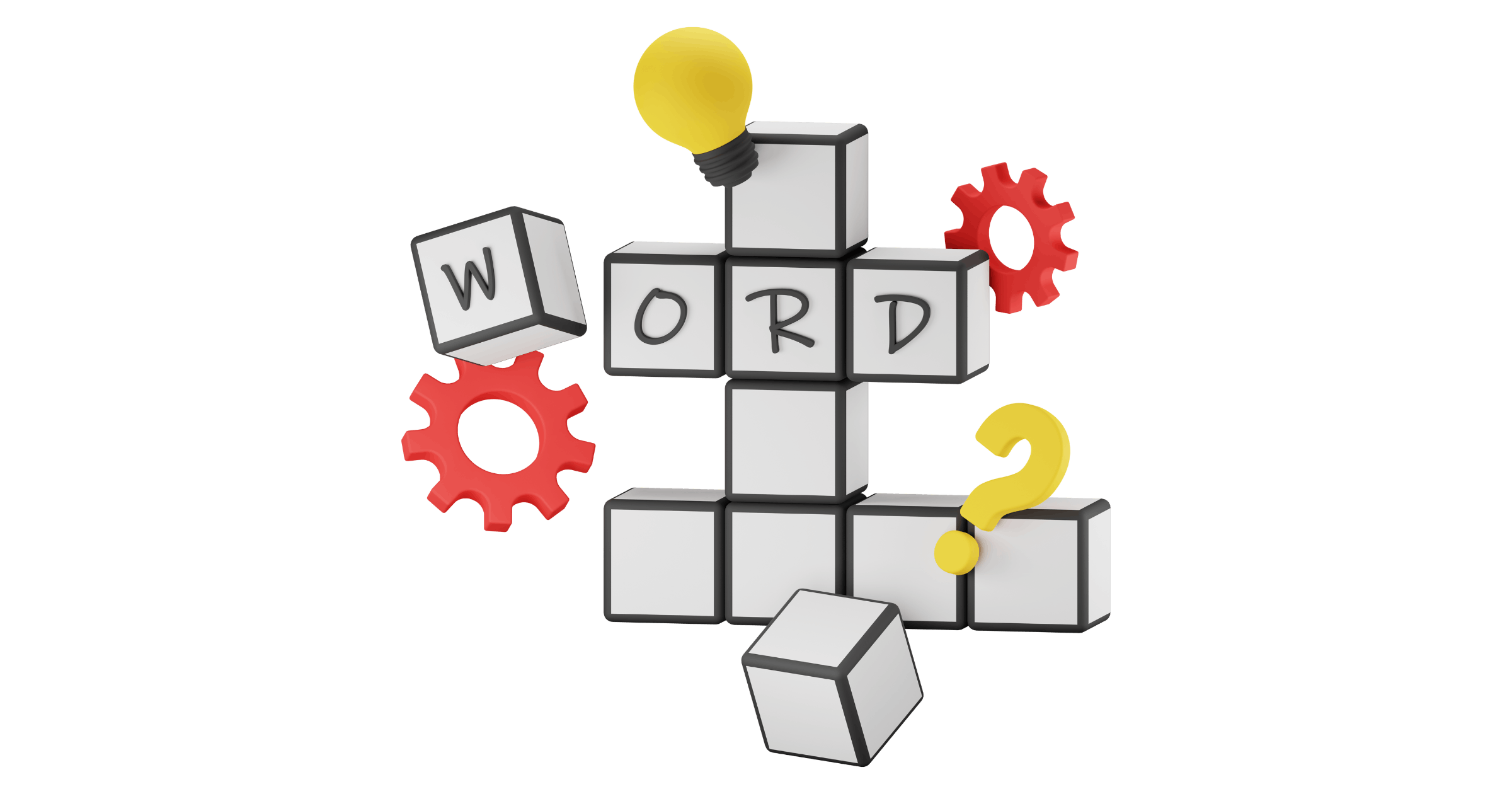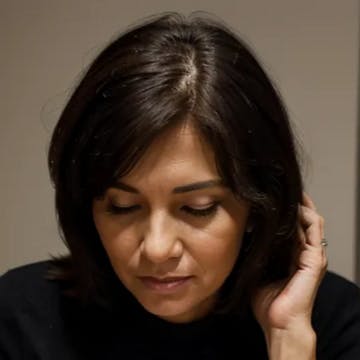The NYT Mini crossword is not just a puzzle; it's part of a thriving gaming ecosystem that's transforming how we engage with classics like crosswords. With the rise of games like Wordle and Connections, there's a renewed interest in wordplay and mental challenges, making the NYT Games platform a hub for diverse gaming experiences.
As new players join this vibrant community, they bring fresh perspectives and enthusiasm, enriching the puzzle-solving landscape. The Mini puzzle offers a bite-sized challenge with a 5x5 grid (or a longer version on Saturdays). Unlike the Classic puzzles, the Mini doesn't follow a difficulty curve over the week, maintaining a consistent level of challenge while offering a quick daily dose of crossword fun.
In this guide, we'll explore essential clue-reading tips that will teach you how to solve The New York Times (Mini) Crossword puzzle and embark on your own journey toward crossword mastery. I meticulously researched and curated this Year's Mini puzzles collection, handpicking the most relevant examples to bring excitement and practical insights to this article.
13 Expert Clue-Reading Tips with Examples
Let’s start exploring the first rules using the Mini puzzle from March 30, 2024.
By examining its clues and answers, we'll see how matching tense, part of speech, and plurality leads us to the correct solutions.
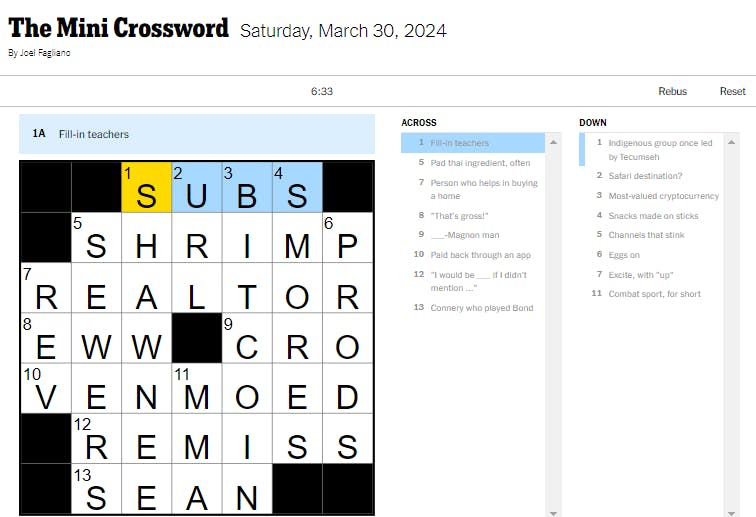
Rule #1 - Tense
When solving crossword clues, it's crucial to match the tense of the clue with the tense of the answer. For example, if the clue is in past tense, such as Paid back through an app the answer must also be in past tense. Therefore, the correct answer would be VENMOED, not VENMO or VENMOS This rule helps guide your selection of the appropriate verb form based on the context provided by the clue's tense.
Rule #2 - Parts of Speech
Clues and their answers must align in terms of their part of speech. If a clue primarily functions as a noun, the answer will also be a noun. If a clue is a proper noun, then the answer will be a proper noun also. Similarly, if the clue suggests a verb, the answer will be a verb.
Examples:
- Proper noun
Clue using a proper noun: Connery who played Bond
Answer also a proper noun: SEAN
- Noun
Clue: Indigenous group once led by Tecumseh, where "group" is a noun.
Answer: SHAWNEE is also a noun.
- Verb:
Clue: Eggs on
Answer: PRODS
Rule #3 - Plurals
When a clue indicates a plural form, the corresponding answer must also be plural. This rule ensures that the number and grammatical form of the clue match those of the answer.
Examples:
- Clue: Fill-in teachers
Answer: SUBS
- Clue: Snacks made on sticks
Answer: SMORES
Rule #4 - Language
When a clue includes a foreign language indicator, such as "in Spanish" or "en español," you should expect the answer to be in that foreign language.
For example, one clue on April 12's The Mini was Female friend, in Spanish, having the answer AMIGA which means "friend" in Spanish.
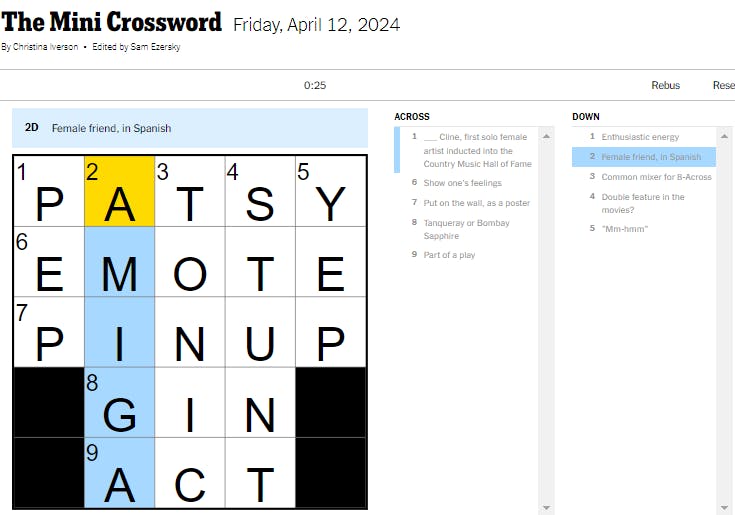
Rule #5 - Cross-References
Some crossword clues may refer to other entries in the puzzle. A clue like 4 Down below - Cat pose or downward dog, in 1-Across, indicates that the answer is related to the answer in the specified locations. You need to solve the related clue first!
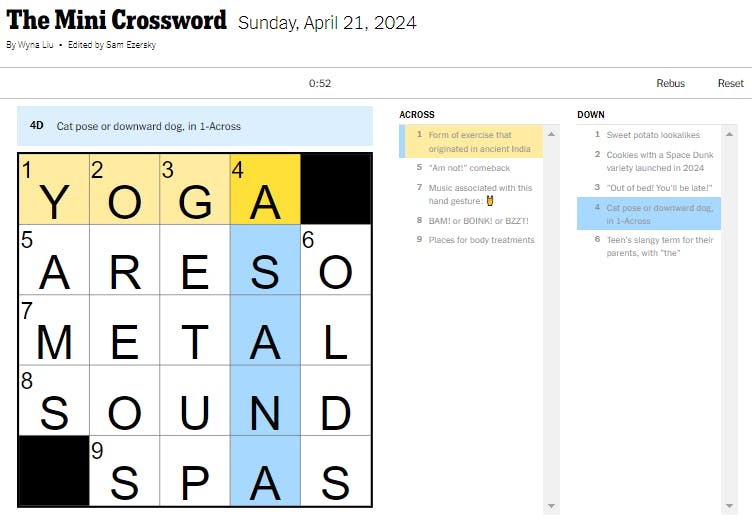
Rule #6 - Partner Clues
Clues that hint at word partnerships require you to identify words that commonly go together. For instance, if the clue is Neither's partner, the answer would be NOR, as in the phrase "neither...nor," where "nor" is the partner of "neither."
Rule #7 - Abbreviations
Clues with signals (e.g., Abbr., For short) indicate abbreviated answers.
For example, the clue on March 11, 2024, I'll return soon, in texting shorthand has the answer BRB which is both an abbreviation and a slang term we'll address a bit later.
Rule #8 - Clues with a "?"
Question mark clues imply wordplay or puns.
For example, the answer BOING for the clue Sound of spring? (The Mini on April 9, 2024) involves a playful use of language and a pun playing on the dual meanings of "spring": one as a season and the other as a physical action. By associating the sound of something bouncing or springing with the word "BOING," the clue creates a humorous and unexpected connection between the concept of spring and the sound it might make.
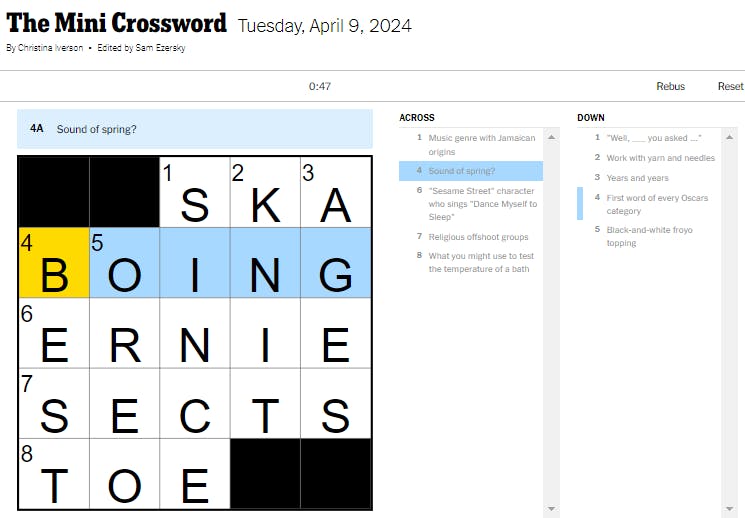
Another example is the clue What a little bird told me? with the answer TWEET (on April 10, 2024). The pun lies in the dual meaning of "tweet": it can refer to the sound made by a bird, aligning with the phrase "a little bird told me," and it also refers to a post made on Twitter (or X), where people share short messages or updates—akin to what a little bird (or tweet) might informally relay.
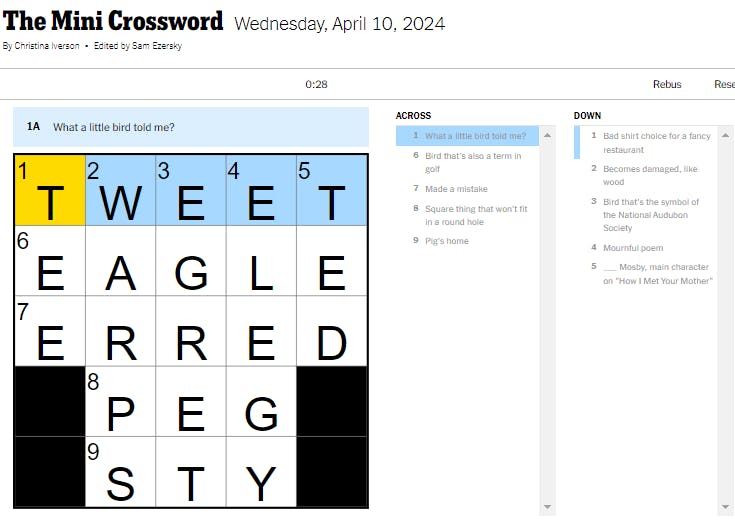
Rule #9 - Slang
In crossword puzzles, clues might use slang words or expressions that are informal or unconventional. It's important to be familiar with both modern and older slang to crack these clues. For example, let's see The Mini puzzle on January 10, 2024, which I surprisingly solved in less than 1 minute. 😉
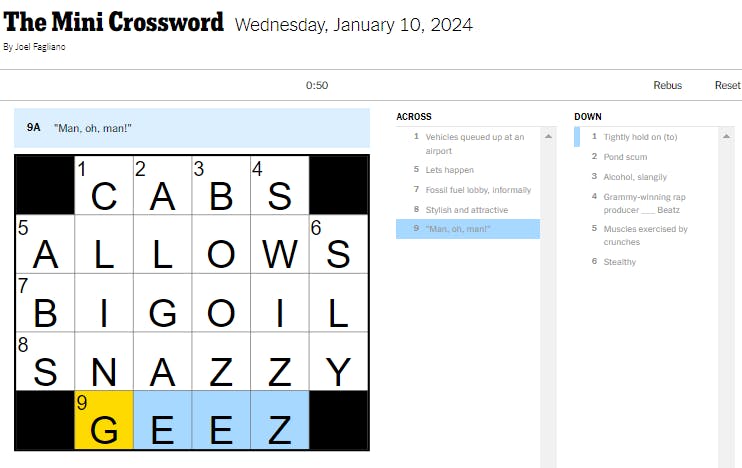
Look at the clue Alcohol, slangily answered by the slang term BOOZE. Or, "Man, oh, man!"'s answer - GEEZ is also a slang term.
Rule #10 - Quotes and [Brackets]
Clues enclosed in quotes or brackets often signal that the answer is spoken or nonverbal, such as a phrase, sound, or action.
In the puzzle above, the clue "Man, oh, man!" is an exclamation that conveys strong emotion or emphasis, often used to express surprise, frustration, or amazement. Its answer GEEZ is a synonym, also expressing surprise.
Another relevant example to help you understand how to read clues that are in quotes can be found in the April 11 Mini puzzle. At 1-A, we encounter the clue "Beat it!" (within quotes) with the answer SCAT. These are synonyms meaning "get lost."
Then, at 9-A, we have the clue Beat it! (without quotes) with the answer EGG. In this second example, Beat it! is more like a command to whisk or beat an egg.
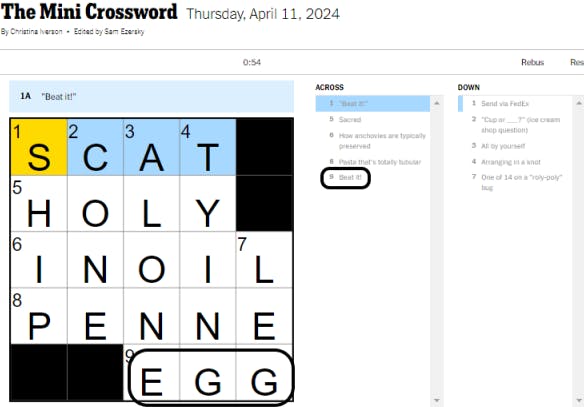
Rule #11 - Veiled Capitals
It involves cleverly using capitalized words in clues to hint at proper names or concepts that might not be immediately apparent. For example, on February 23. 2024, the clue Apple found on Apple Music leads to the answer FIONA. It’s about the singer FIONA APPLE and not the fruit!😉
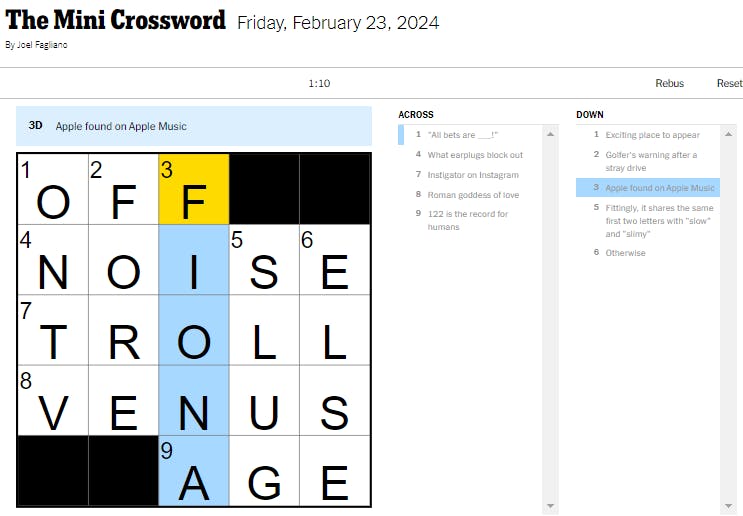
Pro tip: Pay special attention when they are placed at the beginning of the clue. It makes it even easier to overlook the trick.
Rule #12 - Rebuses
Rebuses are symbols or letters that represent words or phrases, typically requiring multiple characters to be written within a single square on the crossword grid. I couldn't find any example of a Rebus in a Mini puzzle, they are used only in classic advanced puzzles, like those later in the week.
In a rebus puzzle, you might encounter a clue that seems to require a longer answer than can fit in the allotted space. This could be an indication that a rebus is involved. Solvers need to think creatively and deduce which word or phrase is represented by the symbols or letters inside the single square.
Rule #13 - Symbols & Emojis
Get ready for some magic! Sometimes symbols and emojis can stand in for clues requiring solvers to think creatively and consider alternative meanings, making the puzzling experience more dynamic and engaging.
Check out these examples:
- Clue: 🤷♀️, Answer: SHRUG
- Clue: @ @ @, Answer: ATS - Those "@" symbols? They're not just for emails. Here, they represent "at."
- Clue: ¢¢¢, Answer: CENTS - The symbol "¢" stands for cent, the repetition suggesting a plural.
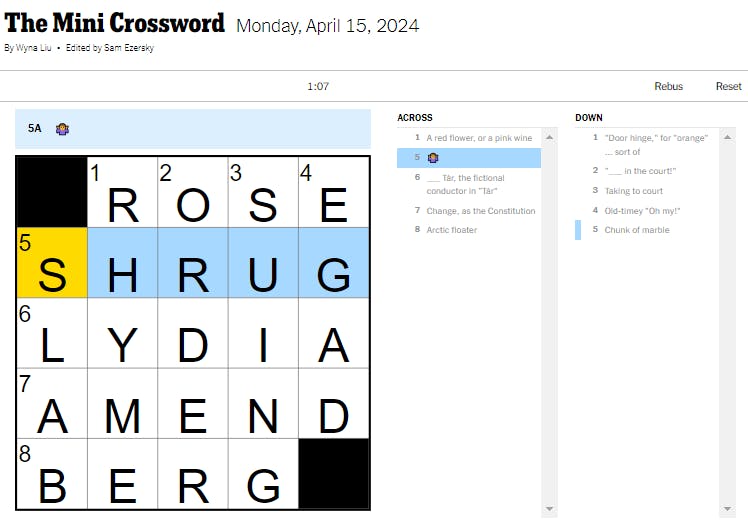
April 15, 2024, The Mini puzzle
With this complete guide under your belt, you're ready to become a crossword maestro!
Before wrapping up, let me share a delightful story from 2015 that encapsulates the wit and charm of The Mini puzzles.
Imagine the scene: back in August 2015, Slate, took a jab at the New York Times Mini crossword, dismissing it as overly simplistic and "the People magazine crossword puzzle of the New York Times." They questioned its value in the crossword realm.
The Mini editor, Joel Fagliano, responded with a clever puzzle that spelled out "AWFUL," "PIECE," and "SLATE" in the answers—a witty and saucy retort that captured the essence of crossword fun.
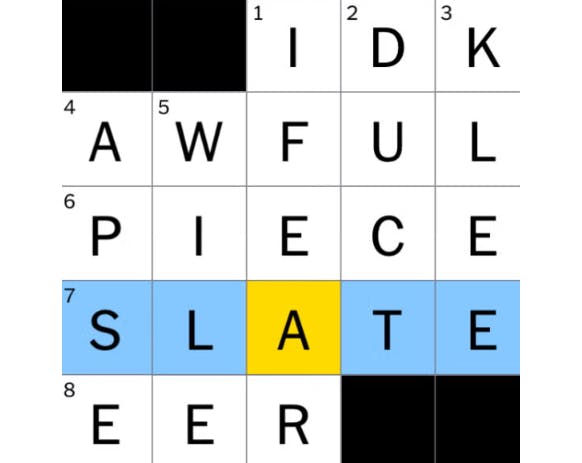
This episode reminds us that even the shortest puzzles can hold surprises and challenges, teaching us to appreciate the artistry behind every clue.
So, embrace the Mini crossword journey! Every puzzle, big or mini, holds delightful tricks up its sleeve. 🧩

 NY Times Mini
NY Times Mini NY Times Crossword
NY Times Crossword NY Times Wordle
NY Times Wordle NY Times Connections
NY Times Connections NY Times Connections Sports Edition
NY Times Connections Sports Edition NY Times Strands
NY Times Strands NY Times Spelling Bee
NY Times Spelling Bee NY Times Pips
NY Times Pips Word Salad
Word Salad Contexto
Contexto Blossom
Blossom Betweenle
Betweenle Conexo
Conexo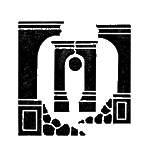 Bracket City
Bracket City Fluxis
Fluxis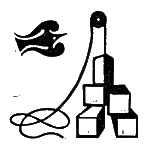 Stacks
Stacks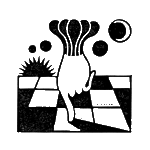 Atlantic Crossword
Atlantic Crossword LA Times Mini
LA Times Mini LA Times Crossword
LA Times Crossword Word Hurdle
Word Hurdle Anagram Solver
Anagram Solver Scrabble Word Finder
Scrabble Word Finder Words With Friends Word Finder
Words With Friends Word Finder Atlantic Games
Atlantic Games LA Times
LA Times Zorzzle
Zorzzle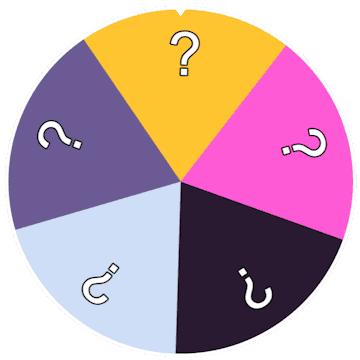 Word of Fortune
Word of Fortune
